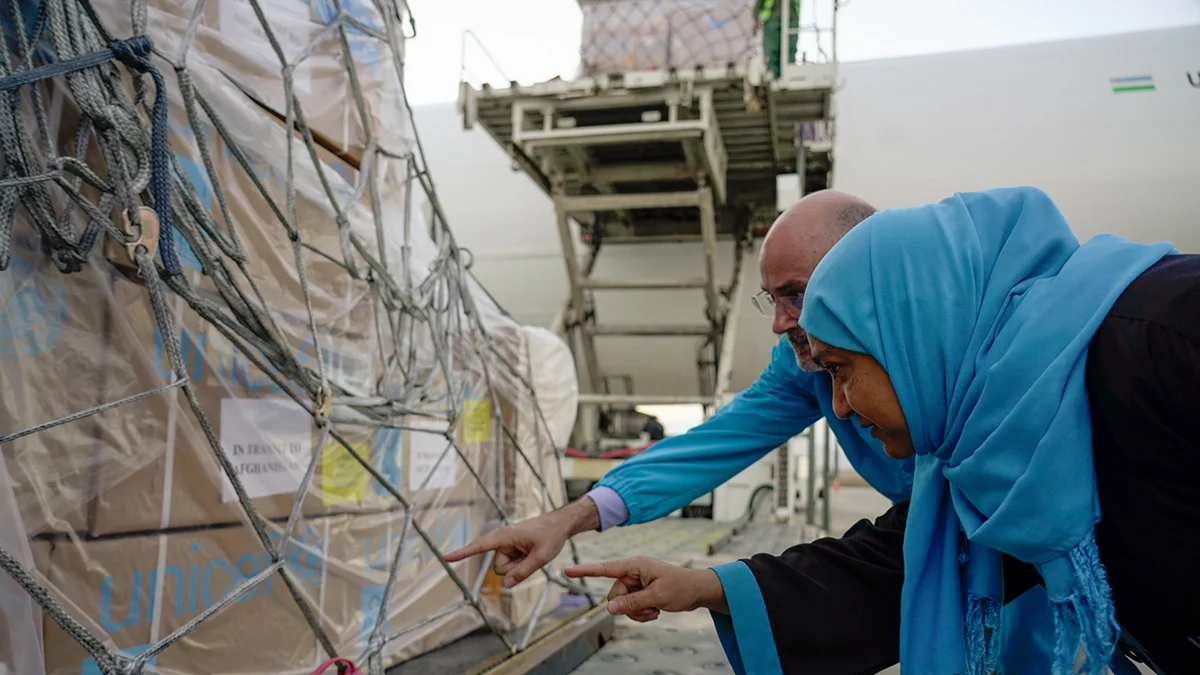More than 80 tonnes of UNICEF medical supplies arrived in Kabul yesterday, including medicines, medical equipment, as well as midwifery and surgical kits, for children, pregnant women, and families following several devastating earthquakes in Herat, western Afghanistan.
Funded by the Asian Development Bank, the earthquake relief supplies for children and their families are part of UNICEF’s emergency response and will help around 43,000 families suffering after the disasters. Airlifted[1] to Afghanistan from UNICEF’s warehouse in Copenhagen, the supplies also include medical treatment for children suffering from acute watery diarrhoea.
“The medical supplies that arrived in Kabul today are a lifeline for thousands of children and families in need of immediate, life-saving assistance in the aftermath of the devastating earthquakes,” said Fran Equiza, UNICEF Representative in Afghanistan. “UNICEF teams on the ground are delivering crucial aid to children and families at this critical moment. However, with winter looming, we are in dire need of support, as children in the worst affected areas teeter on the edge of collapse. We urgently appeal for additional funding to aid 96,000 children affected by the recent earthquakes in western Afghanistan.”
According to latest updates, nearly 1,500 people were reportedly killed in the recent earthquakes in Herat and surrounding districts. Almost 90 per cent of those killed are women and children. In the three most affected districts, around 154,000 people have either completely lost their homes or their homes were severely damaged.
UNICEF is also transporting 300 High Performance Tents to Afghanistan by land directly from a regional supplier. During emergencies, UNICEF uses multipurpose tents for schools, health clinics, nutrition facilities, distribution points and child-friendly spaces.
In addition to these supplies being shipped into the country, UNICEF, to date, provided more than 17,800 people with essential water and sanitation supplies and more than 9,100 people were provided with safe water through water trucking. Nearly 10,400 people received winter clothing and family kits containing essential household supplies. Health services were also provided to more than 10,100 people through nine UNICEF-supported mobile health teams and temporary health centres in tents to treat the injured and to tend to their ongoing medical needs. Furthermore, 1,193 households were provided with cash assistance.
These earthquakes come as families brace themselves for Afghanistan’s typically harsh winter even as they grapple with a long-standing drought and alarming levels of malnutrition amongst children.
Over the next three months, UNICEF’s life-saving humanitarian assistance will reach over 200,000 people – including 96,000 children – living in the most earthquake-devastated and vulnerable areas of Herat province.
[1] Funding for the plane charter to Afghanistan was generously provided by UNICEF’s thematic donors.
